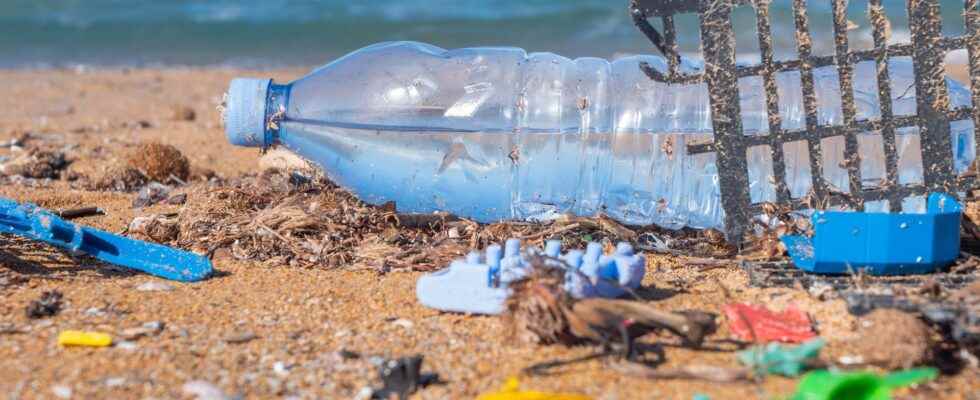A research group led by Chan Beum Park from the Korea Advanced Institute of Science and Technology has succeeded in combining two promising future technologies in one process. Their process mimics the photosynthesis of plants and thus utilizes microplastics. As the team reports in Nature Synthesis, an electrode made of zirconium and iron oxide snatches electrons from the microplastic with the help of sunlight. These reach enzymes via an electric circuit, which use the electrons to produce valuable chemicals. So far, however, the study has only shown that the principle works. It is still unclear whether the process is economically worthwhile, whether it can be implemented on a large scale and actually contributes to reducing plastic waste.
Around 390 million tons of plastics are produced worldwide every year – and almost three quarters of them are thrown away again shortly afterwards. The majority of plastic waste ends up in incinerators or accumulates in landfills and in nature. An even greater ecological threat are the smallest plastic particles with a size of less than five millimeters. This so-called microplastic includes, for example, cosmetic beads, clothing fibers or tire abrasion.
To utilize such waste, Chan Beum Park and his colleagues Jinhyun Kim, Jinha Jang, and Thomas Hilberath and Frank Hollmann from the University of Technology in Delft are now using a principle that plants have used since time immemorial. They use PET as a raw material, which is what plastic bottles are made of, for example. Sunlight provides the energy to extract electrons from the plastic and transfer them to the anode. The electrons are conducted to a carbon fiber paper cathode, which absorbs the electrons and transmits them to enzymes.
Microplastics as an electron source
These use the high-energy electrons to produce valuable chemicals. As the working group shows, the principle works with various enzymes that allow technically important reactions to take place. So you can specifically choose which substances you produce with the help of the plastic waste. Meanwhile, the plastic waste produces formic and acetic acid, which are also used for a number of industrial applications. “These results indicate that the photoanode can extract electrons from the microplastics and produce organic fuels from them,” they write, but at the same time point to weaknesses in their process.
